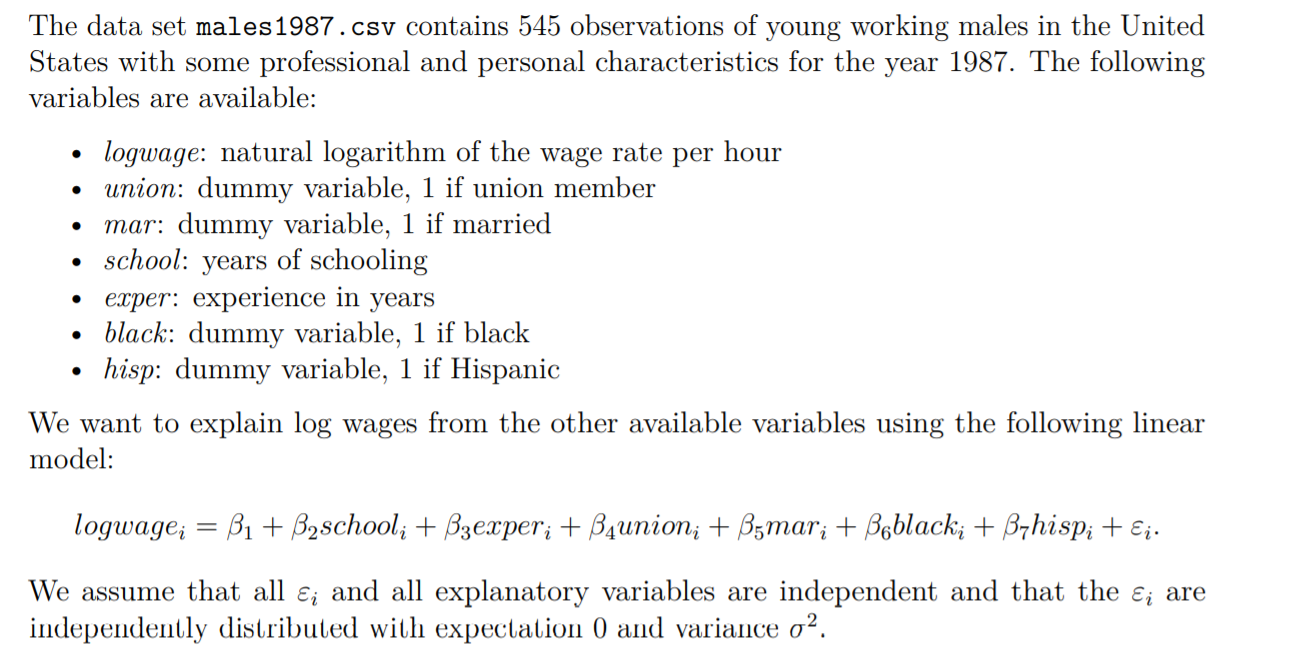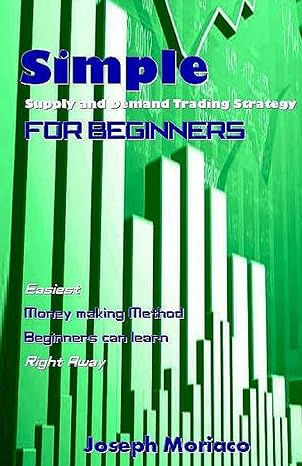

The data set males1987.csv contains 545 observations of young working males in the United States with some professional and personal characteristics for the year 1987. The following variables are available: O O . O logwage: natural logarithm of the wage rate per hour union: dummy variable, 1 if union member mar: dummy variable, 1 if married school: years of schooling exper: experience in years black: dummy variable, 1 if black hisp: dummy variable, 1 if Hispanic We want to explain log wages from the other available variables using the following linear model: O . logwage; = B1 + B2school; + Bzexperi + Beunion; + 35mari + Boblacki + Bohispi + i. We assume that all ; and all explanatory variables are independent and that the i are independently distributed with expectation 0 and variance o2. a. Estimate the parameters by OLS. Report and interpret the estimation results, including RP. Pay attention to economic interpretations as well as statistical significance. b. Test the null hypothesis that being a union member, ceteris paribus, affects a person's expected wage by 5%. C. Test the hypothesis that race does not affect wages. d. How would you extend the model above to allow for the possibility that black union members benefit more from union membership than non-black union members? Estimate this extended model and test the hypothesis. The data set males1987.csv contains 545 observations of young working males in the United States with some professional and personal characteristics for the year 1987. The following variables are available: O O . O logwage: natural logarithm of the wage rate per hour union: dummy variable, 1 if union member mar: dummy variable, 1 if married school: years of schooling exper: experience in years black: dummy variable, 1 if black hisp: dummy variable, 1 if Hispanic We want to explain log wages from the other available variables using the following linear model: O . logwage; = B1 + B2school; + Bzexperi + Beunion; + 35mari + Boblacki + Bohispi + i. We assume that all ; and all explanatory variables are independent and that the i are independently distributed with expectation 0 and variance o2. a. Estimate the parameters by OLS. Report and interpret the estimation results, including RP. Pay attention to economic interpretations as well as statistical significance. b. Test the null hypothesis that being a union member, ceteris paribus, affects a person's expected wage by 5%. C. Test the hypothesis that race does not affect wages. d. How would you extend the model above to allow for the possibility that black union members benefit more from union membership than non-black union members? Estimate this extended model and test the hypothesis








